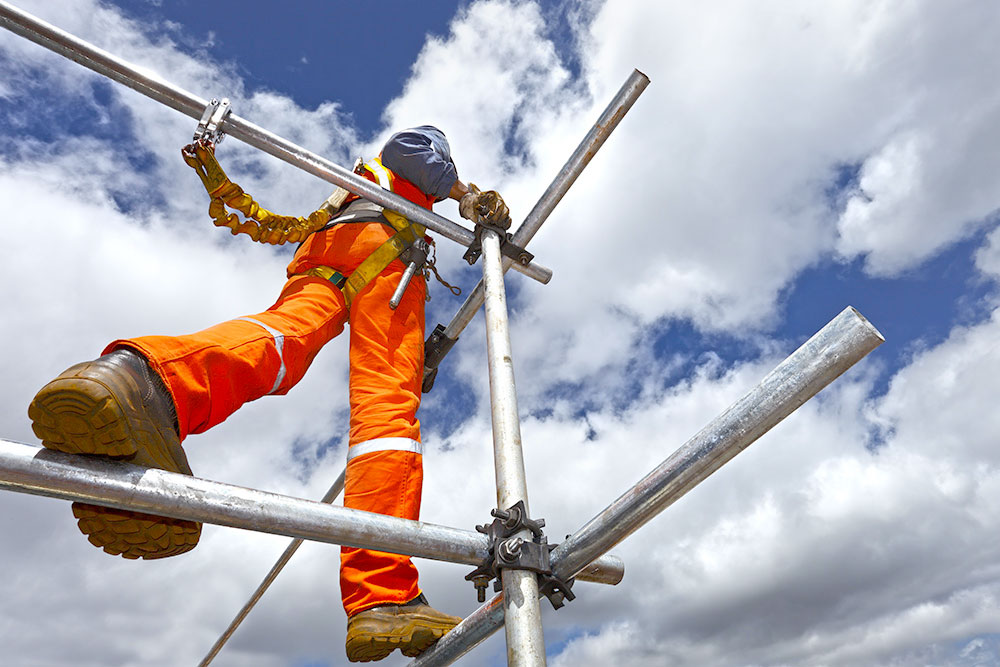Workplace safety is crucial. Not only can accidents lead to injury, illness, or death, but they can also cost your business thousands of dollars in fines.
Each year, the Occupational Safety and Health Administration (OSHA) compiles a list of their top 10 most frequently cited violations from the previous fiscal year. The goal of the list is to increase awareness about the standards most often cited for violations to help employers prevent them from happening and to keep their workplaces safer for employees.
This Year’s List
Update: March 2021 Most Cited OSHA Violations
The latest rankings, which cover fiscal year 2020 (October 2019 through September 2020), are largely similar to previous years.
For the tenth year in a row, Fall Protection tops the list as OSHA’s most frequently cited standard, with Hazard Communication and Scaffolding once again both landing in the top five. The rest of the top 10 rankings are also similar to previous years, with Respiratory Protection (up from #5 to #3) and Eye and Face Protection (up from #10 to #9) both moving up since last year’s rankings — presumably due to increased concerns and scrutiny regarding the COVID-19 pandemic.
Here are the top 10 most frequently cited OSHA standards for 2020, along with the section codes, previous fiscal year rankings, and descriptions of each:
1. Fall Protection
- (1926.501)
- Title: Duty to have fall protection
- 2019 Ranking: 1
- Fall protection requirements, use of appropriate systems for given situations, proper construction and installation of safety systems, and proper supervision of employees. Designed to protect employees on walking/working surfaces (horizontal or vertical) with unprotected sides or edges above 6 feet.
2. Hazard Communication
- (1910.1200)
- Title: Hazard Communication
2019 Ranking: 2
Chemical hazards due to chemicals produced in the workplace and imported into the workplace. Also governs the communication of hazards to workers.
3. Respiratory Protection
- (1910.134)
- Title: Respiratory protection
2019 Ranking: 5
Employer procedures for establishing or maintaining respiratory protection programs. Includes requirements for program administration, worksite-specific procedures, respirator selection, employee training, fit testing, and medical evaluation, as well as respirator use, cleaning, maintenance, and repair.
4. Scaffolding
- (1926.451)
- Title: General requirements
2019 Ranking: 3
General safety requirements for designing, constructing, and loading scaffolding. Employers are obligated to protect construction workers from falls and falling objects while working on or near scaffolding 10 feet high or higher.
5. The Control of Hazardous Energy (Lockout/Tagout)
- (1910.147)
- Title: The control of hazardous energy (lockout/tagout)
2019 Ranking: 4
Minimum performance requirements for hazardous energy control during servicing and maintenance of machines and equipment.
6. Ladders
- (1926.1053)
- Title: Ladders
2019 Ranking: 6
General requirements for all ladders.
7. Powered Industrial Trucks
- (1910.178)
- Title: Powered industrial trucks
2019 Ranking: 7
Design, maintenance, and operation of powered industrial trucks, including forklifts and motorized hand trucks. Also covers operator training requirements.
- (1926.503)
- Title: Training requirements
2019 Ranking: 8
Training requirements for employers regarding fall protection.
9. Personal Protective and Lifesaving Equipment
- (1926.102)
- Title: Eye and face protection
2019 Ranking: 10
Appropriate personal protective equipment for workers exposed to eye or face hazards, such as flying particles and chemical gases or vapors.
10. Machine Guarding
- (1910.212)
- Title: General requirements for all machines
2019 Ranking: 9
Guarding of machinery to protect operators and other employees from hazards, including those created by point of operation, ingoing nip points, rotating parts, flying chips, and sparks.
Key Takeaways
While OSHA has separate sets of standards for various industries, its top 10 list covers all industries and is intended to encourage employers in maintaining an active role in providing a safe work environment for their employees.
As Safety+Health magazine outlines, safety experts recommend that employers view the list as a starting point toward correcting on-the-job hazards. Employers should be fully invested in training programs associated with the standards on the list, as well as help workers achieve and maintain compliance with those standards after they’ve been trained.
These practices have taken on increased importance during the COVID-19 pandemic, as additional testing and safety procedures must be observed, which can make employees feel inconvenienced or rushed, potentially causing additional hazards.


























